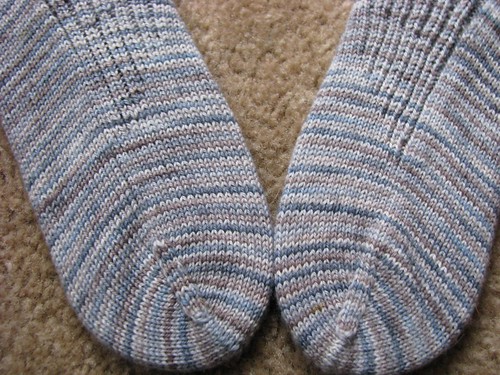Note from the SpaceCadet: My friend Natalie (npeace on Ravelry) is a prolific spinner who creates amazing handspun yarns almost exclusively on spindles. She’s been kind enough to write about a few of her favourites here.
A while ago, I wrote a bit about resources for a beginning spindle spinner. Since writing that post, a couple of people have come back to me saying: That’s all well and good, but what are the actual tools that a beginner needs?
It’s a good question. One of the appeals of spindle spinning is that it really doesn’t take much. A spindle is basically just a stick and a weight, in one configuration or another. Get one of those and add in some fiber – preferably prepared for spinning, but even that’s not completely necessary – and you should be good to go, right? Well, yes… and no. Yes because, well, yes; at a minimum that is what you need to spin. No because, like most activities, having good tools makes the process easier – especially in the beginning.
I recommend a high-whorl spindle to start with. There’s nothing intrinsically better about high whorls compared to low-whorls, or any other kind of spindle for that matter. All types have their advantages. However, the current spindle resurgence, in the US at least, has centered around the high-whorl spindle and this type of spindle is the most readily available, and the most generally used.
For a complete beginner, I suggest a spindle between 1 and 2 ounces. Something in this range should suit most beginners nicely, and will continue to be useful as a plying tool even if the spinner decides with experience that they prefer lighter spindles.
Whorl diameter is also something to consider. Generally, the broader the whorl is, the longer the spindle will spin. For a first spindle, look for something between about 2.5 and 3.5 inches.
With these basics in mind, let me show you the spindles I most often use to teach beginners to spin. These are only the tools that I have found to be effective – there are many other good spindle makers out there, and this list is by no means exhaustive.
My absolute favorite teaching spindle is this is a 1.3 ounce Kundert:
This spindle has a long, level spin that makes it easy for beginners to control as they first learn to draft. It also has a nice broad whorl which lends stability to the spin, and the shape of the hook captures yarn well, minimizing slippage.
With many of the advantages of a Kundert spindle, but at a lower price point is this spindle from Spinsanity:
This spindle does not have the hand-turned elegance of the Kundert, but it is well crafted and has a very similar kind of long, easy spin.
Another maker I often recommend to a beginner is Jonathan Bosworth:
His spindles come in several size ranges, but a beginner would probably do well with a midi. The whorl here is much narrower. However, the way it is shaped still keeps the weight distribution towards the rim, which makes for a long, steady spin. The narrower whorl also makes it easier to carry around with you, so if you plan on spinning when you’re out and about, this might be a good choice.
Finally, on the high end of the price spectrum is Golding Fiber Tools:
Golding craftsmanship speaks for itself. If you’re one of those beginners ready to commit whole-heartedly to this spinning thing from day one, a Golding learn-to-spin kit would be an excellent way to start.
There are many other good makers out there and this list is just something to get you started. If you try one of my suggestions and find that it doesn’t suit you, by all means try something else. Check out the Spindlers and the Spindle Candy groups on Ravelry for other ideas. Your spinning will only be improved by experimentation!







